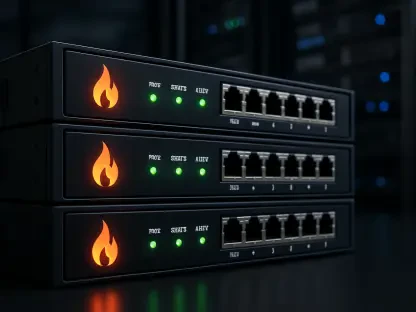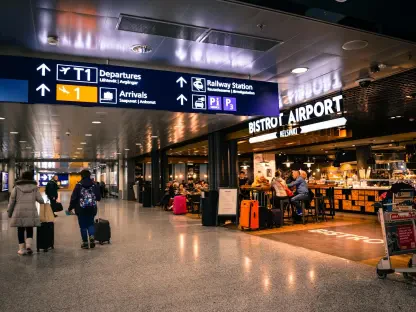As the telecommunications industry rapidly evolves, the integration of artificial intelligence (AI) into Radio Access Networks (RAN) within the 5G infrastructure promises a transformational shift, improving efficiency and performance at unprecedented levels. At the forefront of this transformation stands Nokia and a consortium of industry leaders such as KDDI, SoftBank Corp., T-Mobile US, and NVIDIA. These collaborations aim to develop and deploy AI-powered solutions, which will enhance the capabilities of 5G networks, fundamentally revolutionizing telecommunications. This shift to AI-RAN signals a new dawn for CSPs, paving the way for cutting-edge innovation and future-ready network solutions.
The Power of AI in Telecommunications
Artificial intelligence is not just a buzzword; it represents a seismic shift in the telecommunications sector, especially within 5G networks. By leveraging AI in RAN, operators can achieve a heightened level of efficiency and performance, fundamentally altering how networks operate. This shift is spearheaded by Nokia, in collaboration with key industry partners, working tirelessly to lead the charge in AI-RAN implementation.
Through these initiatives, Nokia, alongside KDDI, SoftBank Corp., T-Mobile US, and NVIDIA, is striving to push the envelope in developing AI-powered solutions. The realization of these goals promises to boost not just the capabilities of 5G networks but also the overall user experiences, ensuring faster and more reliable connectivity. This amalgamation of AI and RAN heralds an exciting era for telecommunications, poised to benefit both operators and end-users.
Collaborative Efforts and Innovations
Driving the integration of AI into 5G RAN is Nokia’s robust strategy of close collaboration with its industry partners. This collective effort is crucial to accelerating the pace at which AI-RAN technologies are developed and deployed. A notable initiative in this collaborative endeavor is the establishment of an AI-RAN Center in Dallas, U.S. This facility is set to be a pivotal hub for developing and testing AI-RAN solutions under real-world network conditions.
The AI-RAN Center’s core mission is to validate AI-RAN reference architectures while fostering the creation of innovative use cases. This will not only streamline the deployment process but also ensure that the technology’s transition to commercial networks is as seamless as possible. By working together, Nokia and its partners are poised to tackle one of the most significant challenges in telecommunications today—efficiently integrating cutting-edge AI technologies with RAN infrastructure.
Platform-as-a-Service Models for CSPs
In its pursuit to revolutionize telecommunications through AI-RAN, Nokia is also focusing on enabling new business models for Communication Service Providers (CSPs). One such model is the Platform-as-a-Service (PaaS). This concept involves providing scalable computing infrastructure to CSPs, which can be used for processing AI and other services, further optimizing network operations. By evolving Cloud RAN solutions to include AI computing within shared infrastructure, Nokia aims to enhance resource efficiency, unlocking new monetization opportunities for operators.
This shift to AI-powered PaaS models is significant as it allows operators to offer more flexible and scalable services, ultimately improving network performance and cost efficiency. Leveraging shared AI computing can reduce operational overheads and create new revenue streams, ensuring CSPs remain competitive in a rapidly evolving market. Through this strategy, Nokia is showing the industry how integrating AI at different layers of the telecommunications stack can yield substantial benefits.
Strategic Partnerships and Research
Nokia’s collaboration with NVIDIA is a testament to the benefits of combining expertise from different technological realms. This partnership focuses on assessing the viability of multi-purpose accelerated computing infrastructure to support AI-RAN applications. The goal is simple but ambitious—to harness the transformative potential of AI-RAN effectively. By leveraging NVIDIA’s expertise in accelerated computing, the partnership aims to develop solutions that are not only innovative but also practical for real-world deployment.
Similarly, Nokia’s strategic partnership with KDDI centers on exploring the practical applications of AI-RAN. The collaboration is geared towards enhancing user experiences, improving network quality, and reducing costs through automation. By conducting commercial trials using AI-enabled RAN hardware, both companies are investigating monetization opportunities that leverage GPUs and Generative AI. These partnerships and research initiatives underscore the importance of collaborative efforts in advancing AI-RAN technologies and ensuring their commercial viability.
Real-World Demonstrations and Trials
Nokia’s partnership with SoftBank has yielded successful demonstrations that showcase the integration of multi-purpose, optimized AI workloads within the AI and RAN platform. By highlighting the efficient sharing of computing resources, this collaboration underscores the potential for significantly enhanced resource utilization. Such successful trials demonstrate the practical benefits of AI-RAN integration, including improved operational efficiencies and accelerated return on investment for network operators.
Furthermore, with T-Mobile US, Nokia is pushing the boundaries by exploring innovative architectures for multi-purpose cloud infrastructure. This partnership aims to understand the feasibility of using accelerated computing for Layer 1 (L1) and assess the co-existence of AI and RAN on shared infrastructure. By evaluating these aspects through real-world trials, Nokia and T-Mobile US are providing valuable insights into the potential technological and economic benefits of AI-RAN, paving the way for its broader adoption across the industry.
Showcasing AI-Powered Solutions
The Mobile World Congress 2025 will serve as a significant platform for Nokia to showcase its AI-powered solutions. Among the highlights will be the management of RAN and AI workloads on the same infrastructure, demonstrating the optimization of RAN performance with AI in Nokia’s AirScale base stations. These demonstrations will not only highlight the technological advancements but also provide a glimpse into the future of AI-driven 5G networks.
Additionally, Nokia will exhibit its extensive AI-based services portfolio, introducing innovations such as extended reality visualization for the AI-powered Digital Network Twin. These capabilities will give attendees a comprehensive view of how AI can be harnessed to enhance 5G network operations, offering a preview of future-ready solutions designed to meet the evolving demands of the telecommunications industry. The demonstrations will underscore the proactive efforts being made to integrate AI deeply into the fabric of 5G infrastructure.
The Future of 5G Networks
As the telecommunications sector evolves at a rapid pace, integrating artificial intelligence (AI) into Radio Access Networks (RAN) within the 5G infrastructure represents a game-changing advancement. This integration enhances efficiency and performance to levels never seen before. Leading the way in this transformation are Nokia and a consortium of industry giants, including KDDI, SoftBank Corp., T-Mobile US, and NVIDIA. Their collaborations focus on developing and deploying AI-driven solutions that will vastly improve the capabilities of 5G networks. This development is set to fundamentally transform telecommunications, bringing unprecedented innovation and future-ready network solutions. The shift to AI-RAN heralds a new era for Communication Service Providers (CSPs), allowing for state-of-the-art advancements and technical ingenuity. It not only creates smarter networks but also paves the way for features like automated management, reduced latency, and enhanced user experiences, making this a crucial step forward for the industry.









